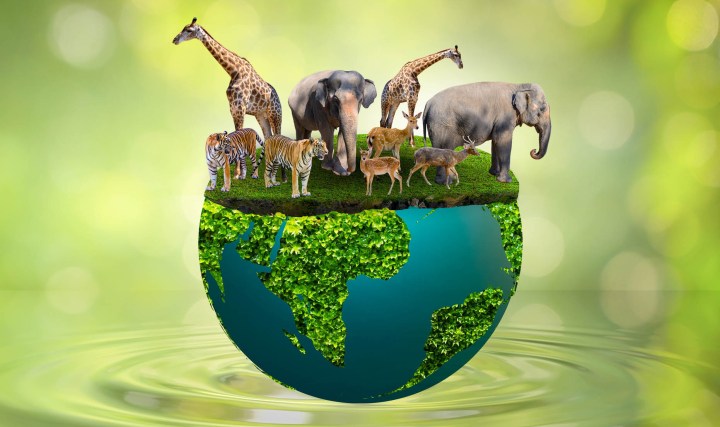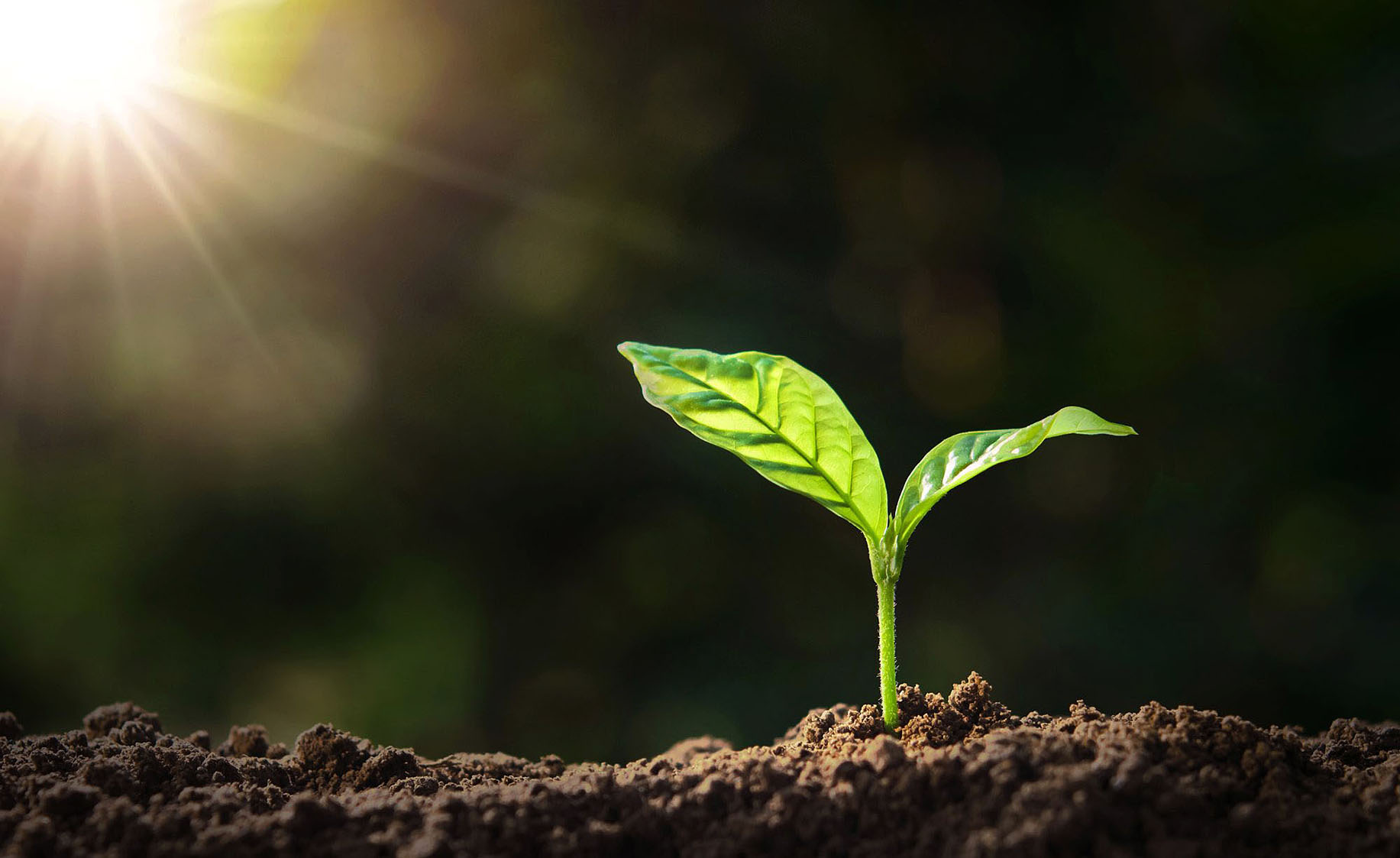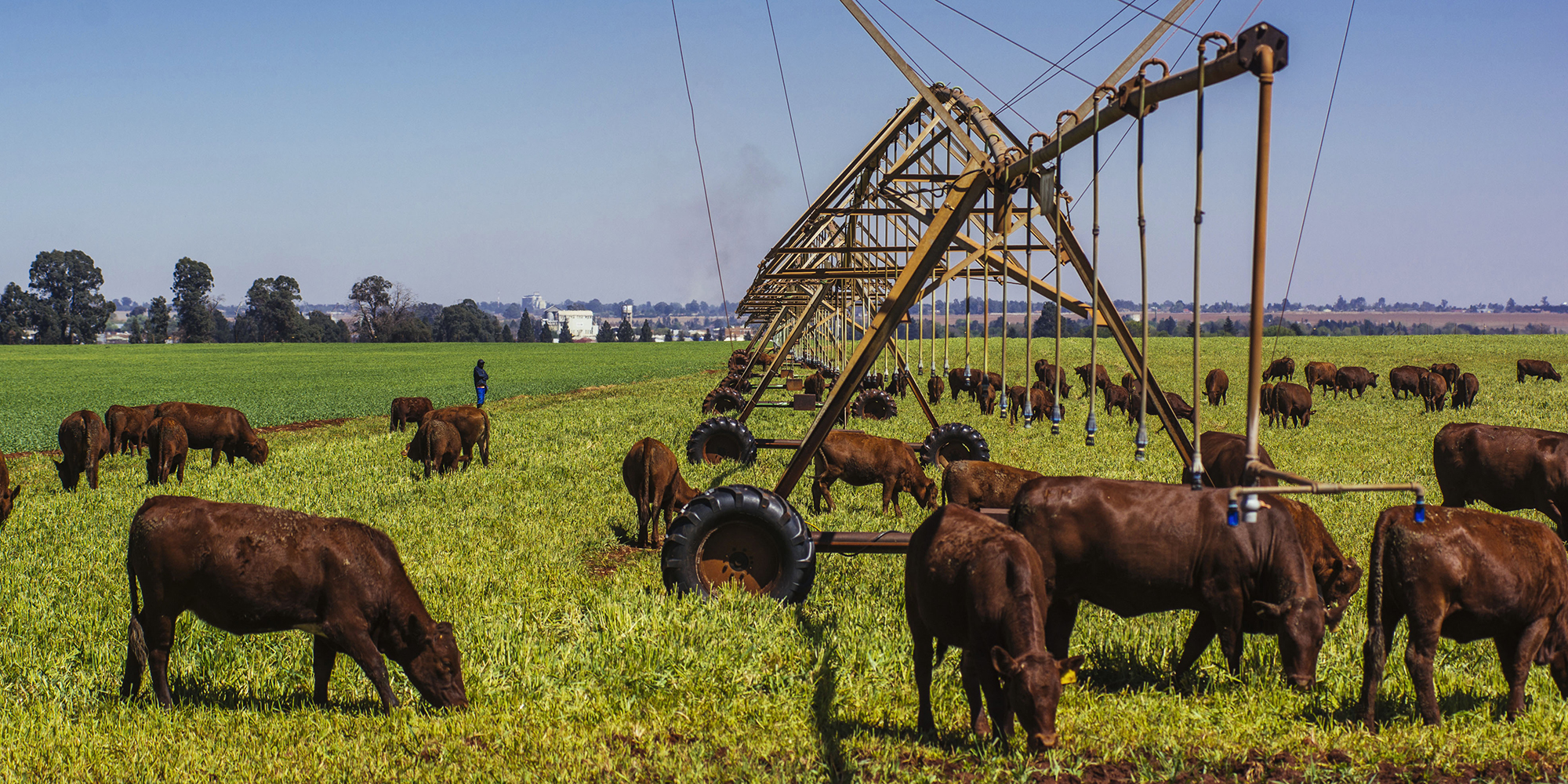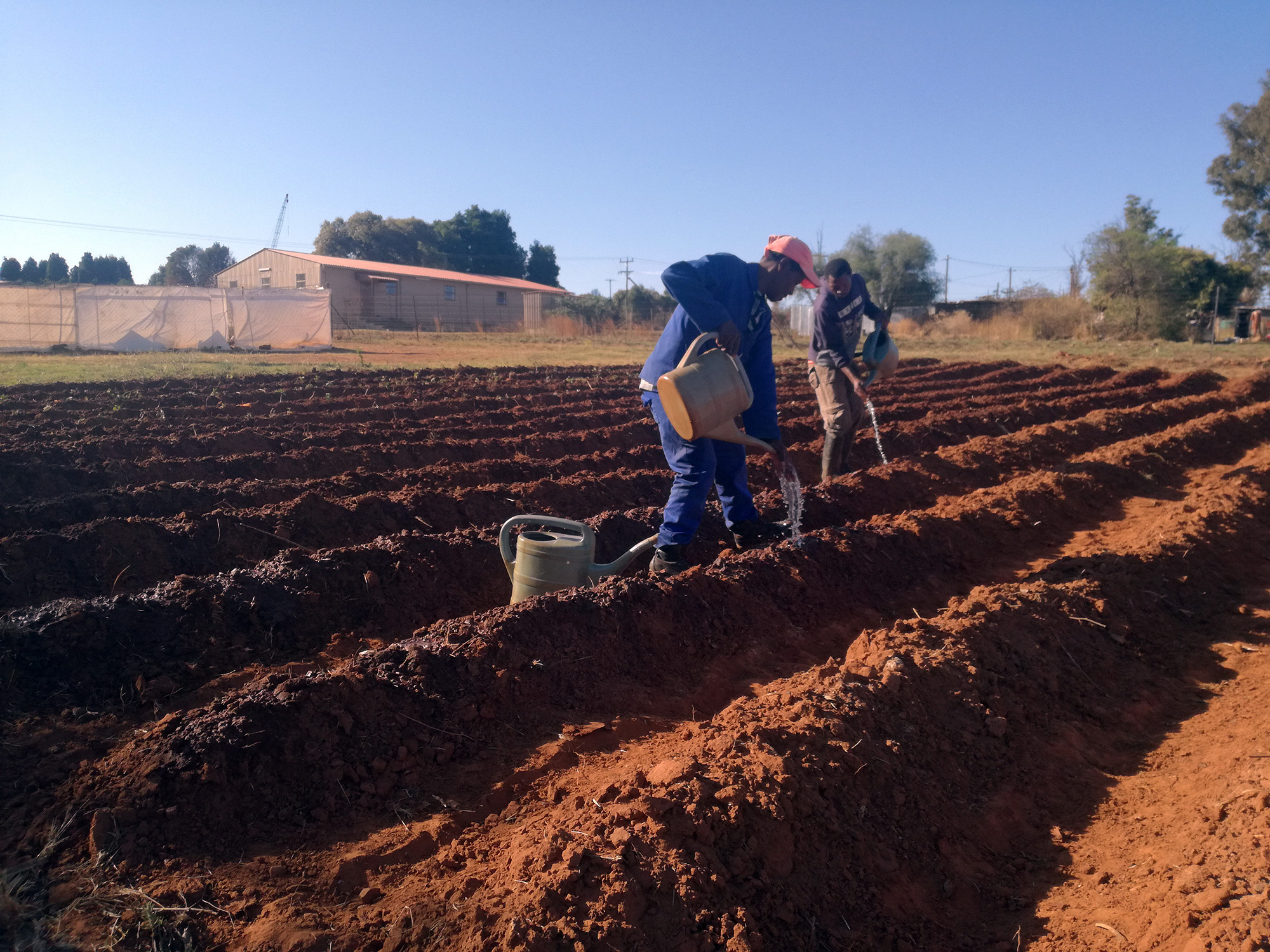CONSERVATION AND SUSTAINABLE USE OP-ED
Dramatically different and signalling a lost opportunity — South Africa’s revised environmental policy

After the closing of the public consultative period for its Sustainable Use White Paper, the DFFE withdrew to assimilate public inputs and written submissions. Worryingly, its new document, a Revised White Paper on Conservation and Sustainable Development of South Africa’s Biodiversity, is significantly different.
History is marked by a handful of watershed moments when humanity has been given the opportunity to change their destinies. These moments come at times of crisis when our entrenched beliefs are challenged. Confined to our homes during the early days of Covid-19, was such a time. Overnight, the din of frenetic human activity ceased; roads, seas and skies emptied and an unimagined stillness reigned.
As our energy requirements plummeted, so too did the gigatons of CO2 being pumped into our atmosphere. Nature’s rhythms responded to the sudden halt of the ever-grinding industrial machine, giving many of us the impression that a turning point had been reached: that we, as humans, might learn from this experience and establish a new relationship with both ourselves and nature, a relationship far kinder to both.
Our future depends on the quality of our relationship with nature and many of us recognise that this relationship needs revisioning. In response to outrage over the burgeoning “cuddle to kill” industry, which includes the captive breeding and “canned hunting” of lions as well as an exploding lion bone trade, Government appointed a High Level Panel (HLP) in 2018 to investigate legislation and practices regarding breeding, hunting, trade and handling of elephant, lion, leopard and rhinoceros in South Africa.
The panel’s report, released in 2020, recommended “that the Minister [of the Environment] urgently initiates a process to develop an overarching national policy (including wildlife) that provides a clear vision and objectives on South Africa’s approach to conservation and sustainable use of the country’s biodiversity… [exemplifying] a shift to an Africanised conservation approach that embraces the diverse cultures, traditions and knowledge systems in South Africa, values such as ubuntu, environmental justice and philosophies such as convivial conservation.”
In June 2022, the Department of Forestry, Fisheries and the Environment (DFFE) released the much-heralded White Paper on Conservation and Sustainable Use of South Africa’s Biodiversity for public comment.
The White Paper’s stated intention was to be “aspirational” with a vision of a “prosperous nation living in harmony with nature”, advocating “activities that enhance the well-being of people and nature at the same time”, where “all people have a high quality of life, a voice, and a nurturing earth supporting them”. All of these ideas were incorporated into an impact statement of “Thriving People and Nature”.

Keeping carbon in soil is key to solving climate change, which is why ‘no-till farming’ is now in favour. (Photo: lovelyday12 / Wikipedia)
Groundbreaking elements
And indeed, the White Paper, in its initial form, contained many groundbreaking elements, which, if implemented, would dramatically change our relationship to our environment.
First, among them, a guiding principle that nature has a value and a right to exist independent of its value to humans – the so-called “intrinsic” value of nature.
Second, a recognition that animals are “sentient” and “can suffer and feel pain”. While this may seem self-evident to many of us, it reverses a trend in thinking going back hundreds of years to the French philosopher René Descartes, who viewed animals as nothing more than soulless machines squeaking in response to the vivisections he conducted upon them.
Third, the White Paper included the values of ubuntu as a guiding principle to regulate and harmonise the relationship between people and nature. In the conception of the document: “Ubuntu promotes harmonious relations, based on respect for nature for nature’s sake, economic and ecological justice for all, and, as an African social compact for just relations between humanity, and the whole creation.”
Fourth, the department’s definition of biodiversity foregrounded the importance of biodiversity existing within ecosystems that are environmentally intact, supporting the growing worldwide realisation that biology does not, and cannot, exist in separable parts. How we treat one part affects the integrity of all others.

Cattle graze on Ehlerskroon farm, outside Delmas in Mpumalanga. (Photo: Waldo Swiegers/Bloomberg via Getty Images)
Whilst “aspirational” and highly progressive in many aspects, the initial White Paper was also a highly contradictory document. Perhaps the most obvious of these contradictions was evidenced in the elevation of economic growth and free market principles above biodiversity protection. Despite recognising that large areas of South Africa are in a state of ecological degradation and dysfunction caused by economic overexploitation and overutilisation of natural resources, the White Paper envisaged greatly expanding the “biodiversity-based economy” as a means of driving economic growth.
There is a term in psychology called “cognitive dissonance”. It refers to a state when two thoughts or ideas contradict each other. This dissonance is at the heart of the contention that expanding the very activities which have caused environmental degradation will, somehow, produce the opposite result: a flourishing environment. It is the idea that we can use more of what we increasingly have less of and that, in the process, we will end up with more.
The principle of sustainable use
The magical thinking thought to reconcile this contradiction is advanced in the White Paper as the principle of “sustainable use”. If we think about it, for use to be truly sustainable, it implies that we cannot use resources at a rate that is greater than their natural ability to regenerate themselves. If we do so, it will lead to their long-term decline. If we transgress the limits of our planet’s biology to regenerate and reproduce itself, if we destroy its habitat, and its complex web of interrelationships, it will inevitably and catastrophically deteriorate. We cannot artificially increase our rate of consumption indefinitely. Or can we?
The history of the idea of sustainable use is a chequered one. The principles underlying it were first adopted at the 1972 United Nations Conference on the Human Environment. As a concept, it became known as “Sustainable Development” in a 1987 United Nations environmental document entitled Our Common Future.
Despite the adoption by many countries of the principles of sustainable development, our environment continues its dramatic and catastrophic decline. The latest WWF Living Planet Report 2022, which measures populations of more than 32,000 monitored species, indicates that populations worldwide have declined by an average of 69% since 1970. That means we have lost more than two-thirds of these populations in the 50 years since the principle of sustainable development was adopted as the environmental protection standard. Clearly, it is not working.
In an attempt to circumvent the natural limits of biology, and to increase production rate of commercially “valuable species”, and thus profit, humans have turned to intensive breeding and industrial agriculture. This agriculture is designed to supersede natural biological limits in a number of different ways:
- by shortening the length of time taken for an animal or plant to reach the “harvesting” stage – through the alteration of its genetic makeup or by administering artificial growth hormones,
- by crowding animals into confined areas, using less land for “production”, thus increasing the “yield” per acre of land. In this situation, the land itself cannot naturally provide sufficient food for animals, so they are artificially fed with food grown intensively elsewhere. Animals in these situations are generally susceptible to disease occasioned by overcrowding and unsanitary conditions and so are routinely administered antibiotics.
- The plant equivalent of intensive animal farming is mono-cropping. Land is cleared of biodiversity and single species of plants are planted in rows being fed, most often, with artificial fertilisers to stimulate growth,
- by eliminating natural animal predators or organisms that feed off plants or crops in a naturally occurring cycle. In the case of animals, predators are poisoned or hunted out and in the case of plants and crops, creatures and organisms are killed with fungicides and herbicides,
- by tricking the biological “clocks” of certain farmed animals or plants into believing that it is perpetual day or that a particular season of the year is continually present. In the case of chickens, for example, they are often kept indoors with the lights on to stimulate continual egg laying.
In addition, those animals or plants which are marked out for survival due to their commercial value, are often genetically modified to be more “acceptable” or “tempting” to consumers. Thus, for instance, animals may be specifically bred for certain characteristics such as less muscle and more tender meat, larger kidneys, etc.
Given the economic imperative to grow the “biodiversity economy” and its contribution to GDP – within the limits of the principle of sustainable use – it is no wonder that the DFFE, in consultation with established commercial interests, authored a Draft Game Meat Strategy earlier this year (released for public comment at the same time as the Biodiversity White Paper, and later revised) that promotes the idea of industrial-scale farming of our wild animals.
Model is morally questionable
Not only is this model morally questionable, it also poses a multitude of risks. Following concerns raised in 2009 within the scientific community about the growing instance of selective breeding and intensive management of game within the South African wildlife industry and its effect on biodiversity, the Minister of the Department of Environmental Affairs commissioned a report which was released in 2018.
This report emphasised many risks highlighting the loss of genetic integrity and zoonotic disease, as well as further environmental degradation. In defiance of the report’s findings, the Department’s Game Meat Strategy is based on the very practices that have been cautioned against by their own experts.
Equally disturbing is that in 2019, South Africa’s Department of Agriculture, Forestry and Fisheries amended the Animal Improvement Act 62 of 1998 to reclassify 33 wild animals as subject to its regulation. This act was originally intended for agricultural livestock, yet under the amendment, wild animals including lions, cheetahs and rhinos can be genetically modified and, effectively, treated as “farm animals.”
______________________________
Visit Daily Maverick’s home page for more news, analysis and investigations
______________________________
The effects of intensive, industrial agriculture on biodiversity, as well as climate, are catastrophic and well-documented. Land is cleared of “inconvenient” or “unnecessary” plant or animal life in order to grow single plant species or raise single animal species.
In crop farming, mechanical tilling wreaks havoc on soil structure, increasing the potential for erosion and killing soil microbes by exposing them to the elements. Chemical fertilisers which slowly poison the soil and render it barren are used to boost harvests in the short term. The loss of ground cover, as well as trees, is disastrous for moisture retention and the sequestering of carbon. Desertification, which is increasing rapidly worldwide, soon follows.
Intensive animal agriculture is equally damaging, with overgrazing rendering the environment denuded and sterile. Freed from natural predators and artificially speed-bred, these animals proliferate at a rate unknown in the natural cycle. The breeding of cattle, for example, is one of the greatest causes of habitat loss around the world and one of the greatest contributors, through the release of methane into the atmosphere, of climate change.
What renders the seeming cognitive dissonance of the DFFE particularly acute is that South Africa is experiencing a massive loss of biodiversity through the illegal trafficking of both animals and plants. At the same time, The Game Meat Strategy is contemplating establishing a greatly increased international demand for wildlife products. How both an expanded legal and illegal trade in animals can be reconciled with restoring our biodiversity is hard to fathom. It can only be achieved by large-scale intensive farming which is, by its very nature, destructive of biodiversity.

Traditional farming methods such as intercropping consists of farming complementary crops together. (Photo: African Marmalade)
Stakeholders contest the White Paper
When released for public comment in June, the White Paper elicited explosive debate among stakeholders and significant pushback. Some members of the wildlife ranching and hunting fraternities railed against the progressive principles as an unjustified curtailment of their right to deal with animals as their private property.
Others questioned the ability of the White Paper to deliver conditions favourable to economic growth, while the environmental and animal welfare groups called for more extensive legislation supporting a new dispensation for nature.
After the closing of the public consultative period, the DFFE withdrew to assimilate public inputs and written submissions. They have recently issued a new document, a Revised White Paper on Conservation and Sustainable Development of South Africa’s Biodiversity.
And, it is dramatically different.
The Revised White Paper
Gone is the guiding principle that nature has an intrinsic right to exist, independent of its economic value to humans.
Gone, too, is the principle that animals are sentient and can feel pain. The new document calls for “humane treatment” of wild animals, avoiding or minimising “undue pain”. Inflicting pain on our wildlife is therefore permissible as long as it is deemed “due” – leaving the door open for all kinds of commercially cruel and abusive practices.
Gone, too, is ubuntu as a fundamental guiding principle. Although it is still referenced diffusely through the document, it is now more narrowly defined around relations between people rather than between people and nature. Its definition no longer includes the principle of “harmonious relations, based on respect for nature for nature’s sake” and “an African social compact for just relations between humanity and the whole creation”.
Perhaps most concerning is that the concept of “rewilding” – a practice of returning nature to its natural state, yielding remarkable results around the globe – has been removed.
With these progressive concepts gone, so too is the possibility of the White Paper providing a positive framework for the protection of our wildlife and biodiversity. The idea that the concept of sustainable use alone, which allows for the further industrialising of our relationship with nature, will be sufficient to halt, or even reverse, our ecological degradation, is deeply flawed.

The sole purpose of a caged-hen system is to maximise profit and productivity, with more hens being housed in a small area and higher egg production. (Photo by Gallo Images/Farming SA/Jean Le Roux)
Real tragedy of what has been lost
The real tragedy of what has been lost in the White Paper, what historic opportunity is in danger of being squandered, becomes even more apparent when one realises that these abandoned principles and values are the ones that have been responsible for conserving the last of the remaining biodiversity on the planet.
These are the values of the planet’s indigenous peoples who constitute less than 6% of the world’s population, but who are the custodians of more than 80% of its remaining biodiversity. At the centre of their common understanding is the belief that we do not stand above or apart from nature, but rather that we exist in sacred balance and complex interrelationship with each other. That we should not covet, exploit and hoard for ourselves at the expense of others, be they human, plant or animal, for we are of a common, earthly community. That rather than being cruel, we should be kind.
While indigenous peoples differ in their cultures and local knowledge, a recent Assessment Report on the Sustainable Use of Wild Species found the common values of indigenous people to be especially important for the conservation of the natural world including “an obligation to engage nature with respect, to reciprocate for what is taken, to avoid waste, and to manage harvests and ensure fair and equitable distribution of benefits from wild species for community well-being”.
We cannot create a parallel universe where the laws of biology and physics don’t apply – a universe with supercharged consumption and an endless supply of “ecological components” for us to use and discard without effect. This might seem possible in a digital metaverse but even that is powered and made possible by the extraction of physical and biological resources.
Our world is facing increasing pressure from ever-expanding industry, growing populations, deadly pollution, illegal wildlife trafficking, biodiversity loss and climate change. The common cause of these changes is human beings. Not all human beings though, as indigenous peoples have shown us. A different kind of relationship with nature is possible, one hinted at in the initial draft of the White Paper. It is more than a physical issue, it is a moral and a spiritual issue as well.
The idea of sustainable use is a slippery slope, even if we call it “ecologically, economically and socially sustainable”, as does the revised White Paper. We are always going to be in danger of breaching it through misunderstanding the true nature of biological sustainability, or ignoring it when it is “justifiable” to do so, by believing that we can supercede the limits of biology through our ingenuity, or, simply, as a result of the power and political influence yielded by those with most to gain from continued exploitation.
We certainly need a new way, a new set of values, informed by natural wisdom and a deep relationship with nature, to navigate this ecologically troubled time and to ensure a just and thriving future. The swing of the pendulum in the revised White Paper, moves us away from the historic opportunity to change our relationship with nature – choosing instead to support the very model that has brought us to this precarious position. DM/OBP
Michael Chèze is a former investment banker turned writer and filmmaker who is now focussing his attention on money and the global monetary system with a view to bringing about a kinder, more equitable and more beautiful world.




















 Become an Insider
Become an Insider
Comments - Please login in order to comment.